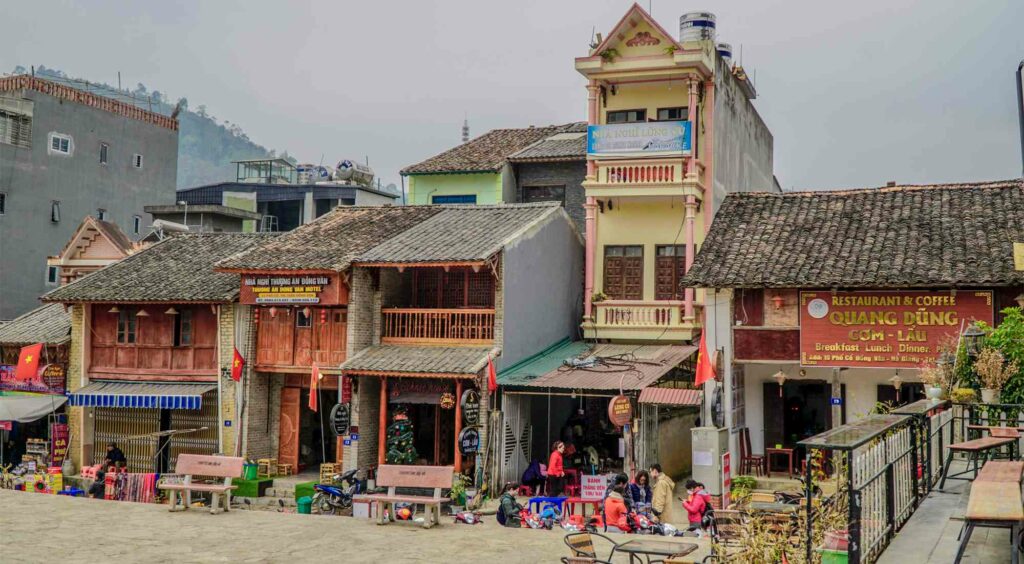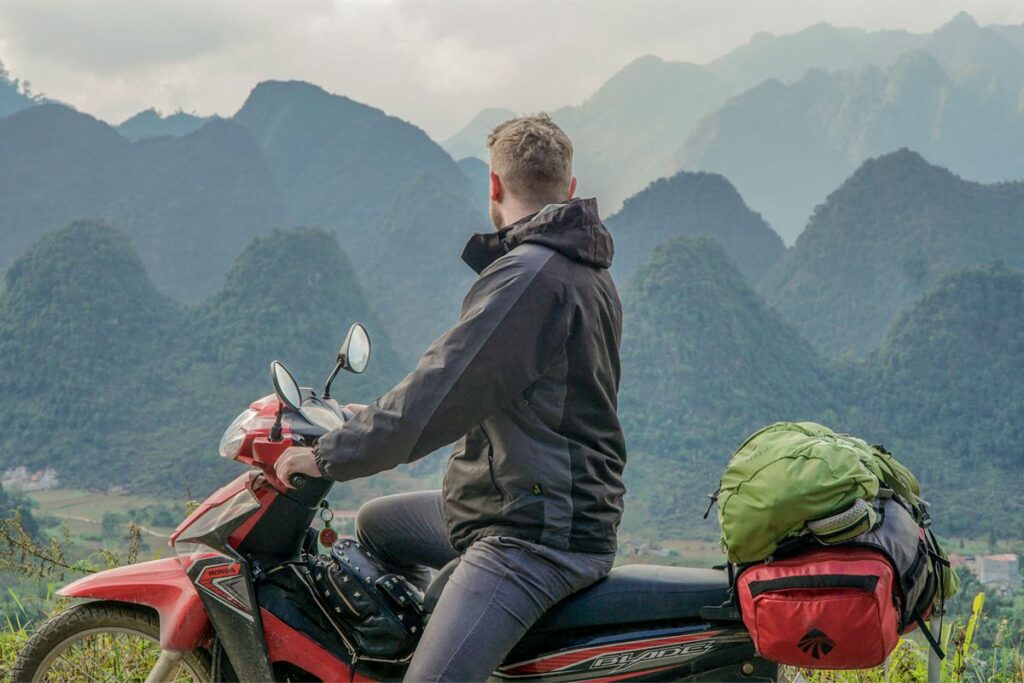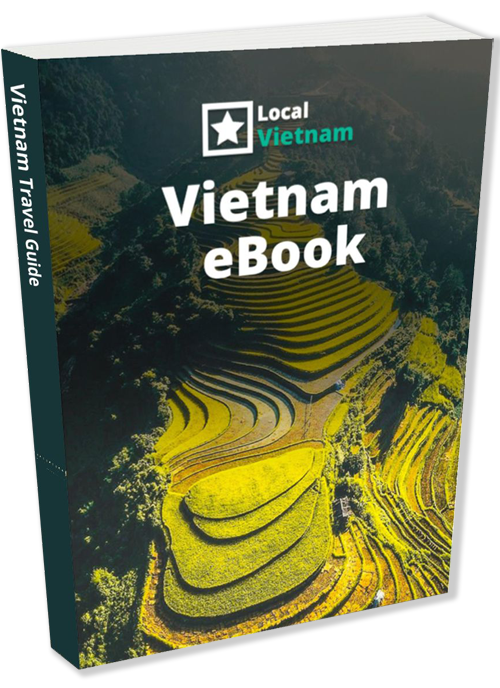About Dong Van
Dong Van is both a district and a town in Ha Giang province, located in the far north of Vietnam near the Chinese border. The district is known for its dramatic limestone mountains, deep valleys, and winding roads, making it one of the most scenic areas in the country. It is also home to various ethnic groups, including the H’Mong, Tay, Dao, and Lo Lo, who have lived in this rugged landscape for centuries.
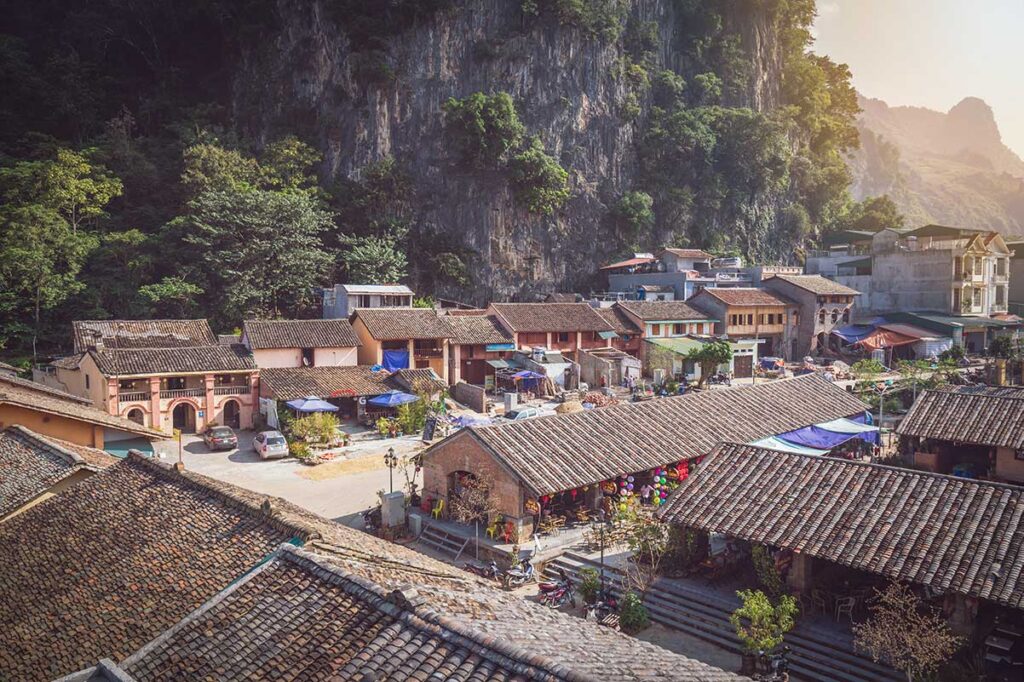
The town of Dong Van serves as the district capital and a key stop along the Ha Giang Loop. It is famous for its historic Old Quarter, the bustling Sunday market, and its location at the start of the legendary Ma Pi Leng Pass—one of Vietnam’s most breathtaking mountain roads.
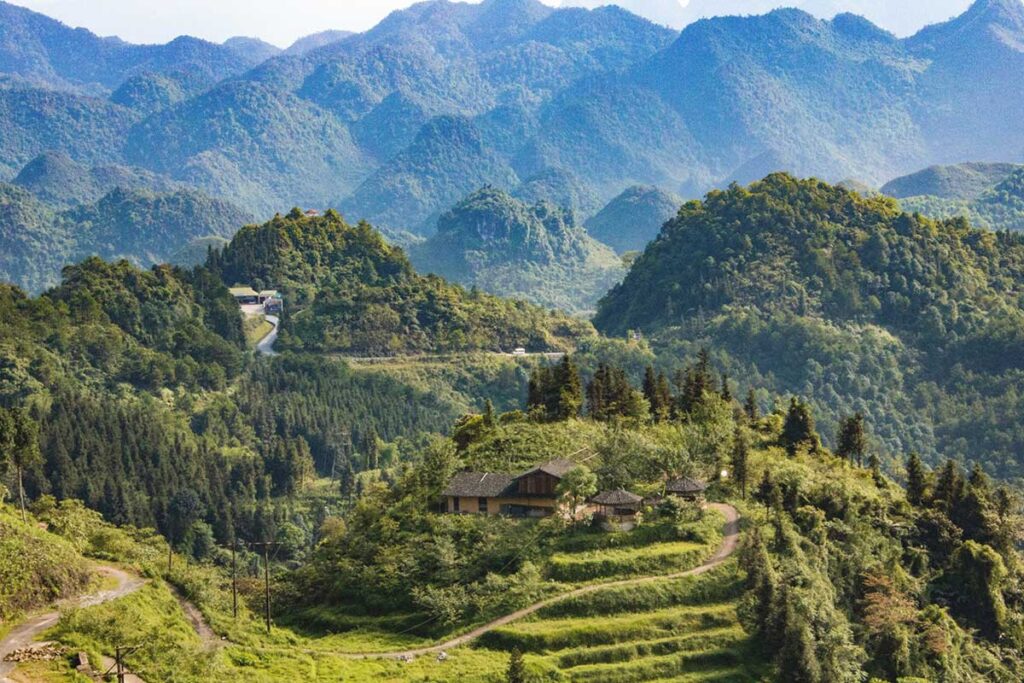
Then there is also Dong Van Karst Plateau Geopark, a UNESCO-recognized area. However, this protected area, which carries the same name as this district, stretches far beyond Dong Van. The geopark covers multiple districts, including Dong Van, Meo Vac, Yen Minh, and Quan Ba, and is known for its unique limestone formations, fossils, and rich geological history.
Things to do in and around Dong Van
Dong Van is one of the most remote destinations in Vietnam, located deep in the mountains of Ha Giang. Due to its distance, careful planning is essential, as most travelers visit as part of the Ha Giang Loop and often only have a short time to explore. Whether you’re here for just a brief stop or have more time to explore the surrounding district, this list of best things to do in Dong Van will help you make the most of your visit.
1. Visit Dong Van Sunday market
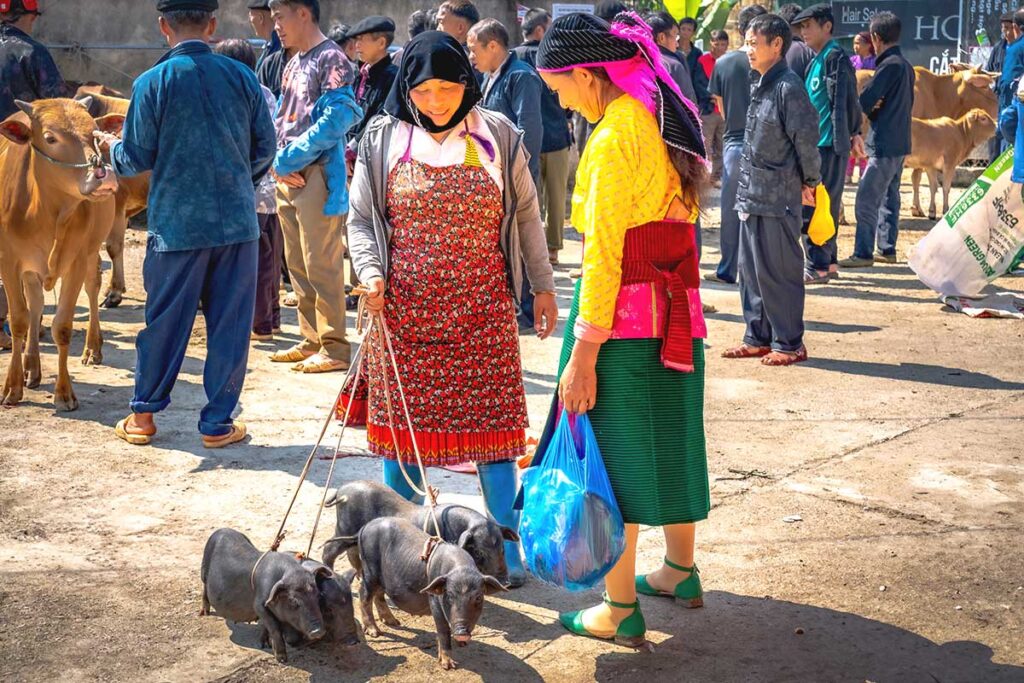
The biggest highlight of Dong Van is the Dong Van Sunday market, held once a week near the Old Quarter. The market starts as early as 5:00 AM, reaching its peak between 7:00 and 10:00 AM, and begins to quiet down after that. A great way to experience the market is by having breakfast at one of the many food stalls, where you can enjoy a bowl of local noodle soup while watching the market come alive.
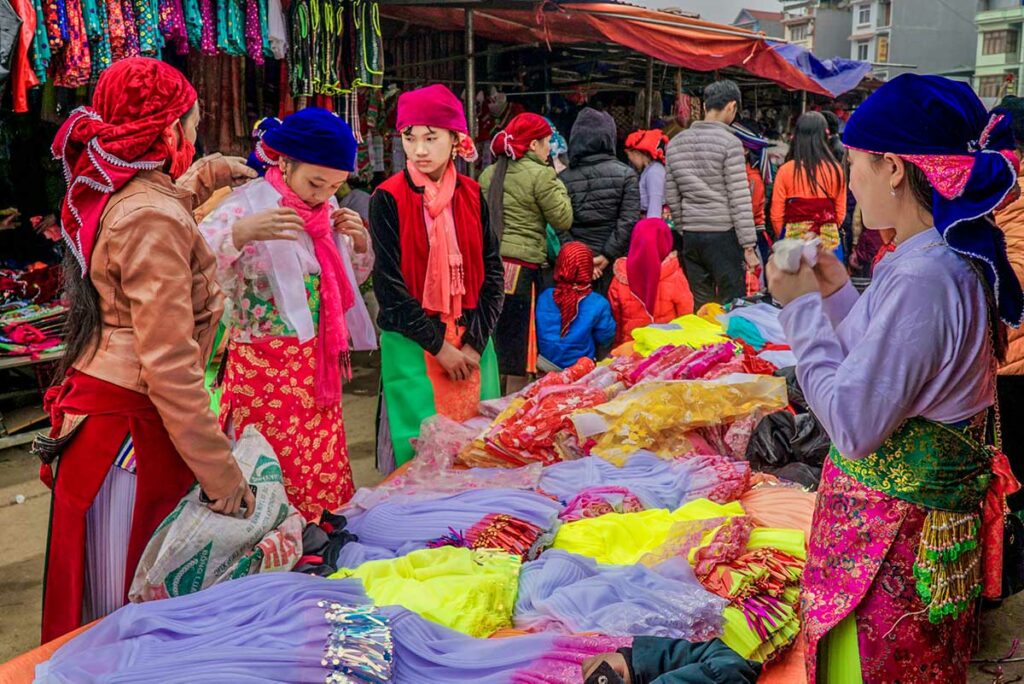
The market is known for its vibrant colors, as local ethnic minorities, including the Hmong, Tay, Nung, and Hoa, wear their finest traditional clothing. Vendors sell a wide range of goods, from clothes and farm tools to household items, mobile phones, and fresh produce. The market is also a social event, with locals playing games, getting haircuts in the open street, and catching up with friends and family. In one section, animals such as buffaloes, cows, chickens, pigs, and even dogs are bought and sold, making it a fascinating but sometimes overwhelming experience for visitors.
2. Walk through Dong Van Old Quarter
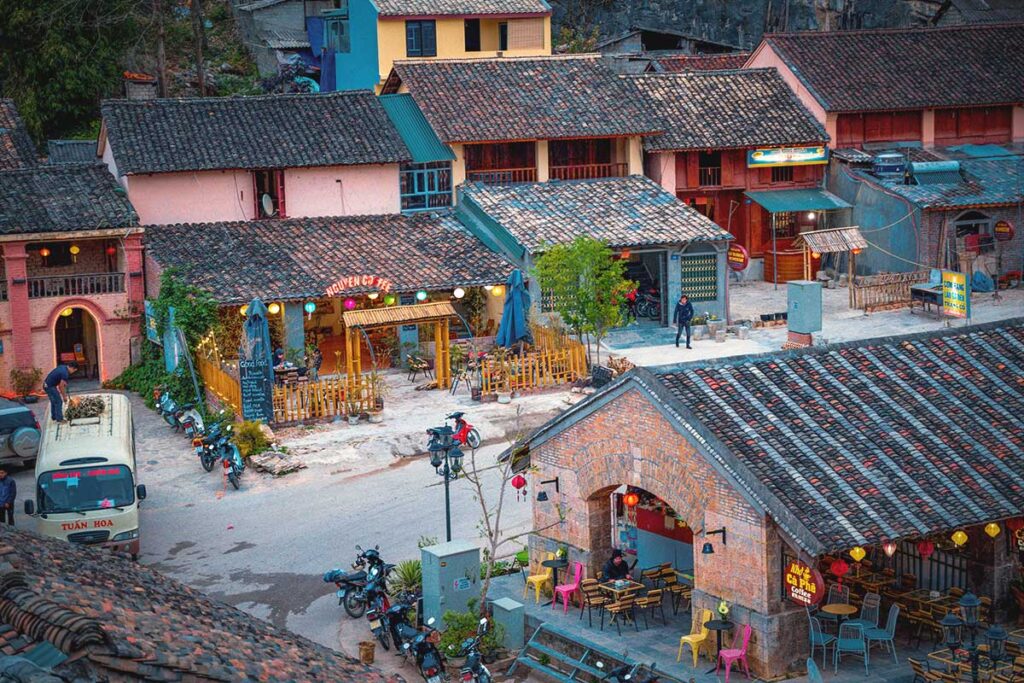
The Old Quarter is the historical heart of Dong Van, featuring a collection of charming century-old houses with a mix of French colonial and Chinese architectural influences. The yin-yang tiled roofs, red lanterns, and wooden balconies give the area a unique character.
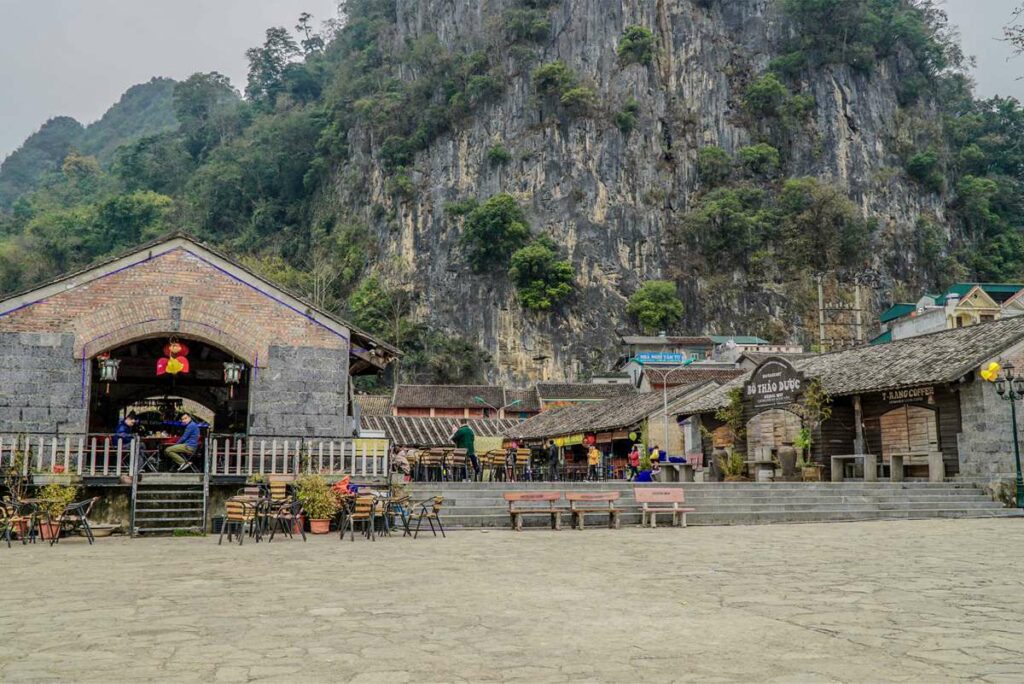
The Old Quarter is best visited in the evening, when restaurants and tea houses come alive, and the streets are beautifully lit up. With around 40 houses over 100 years old, and one that is more than 200 years old, it’s a great place to experience Dong Van’s cultural heritage while enjoying a meal or a cup of tea in a historic setting.
3. Hike to the Dong Van French fort for panoramic views
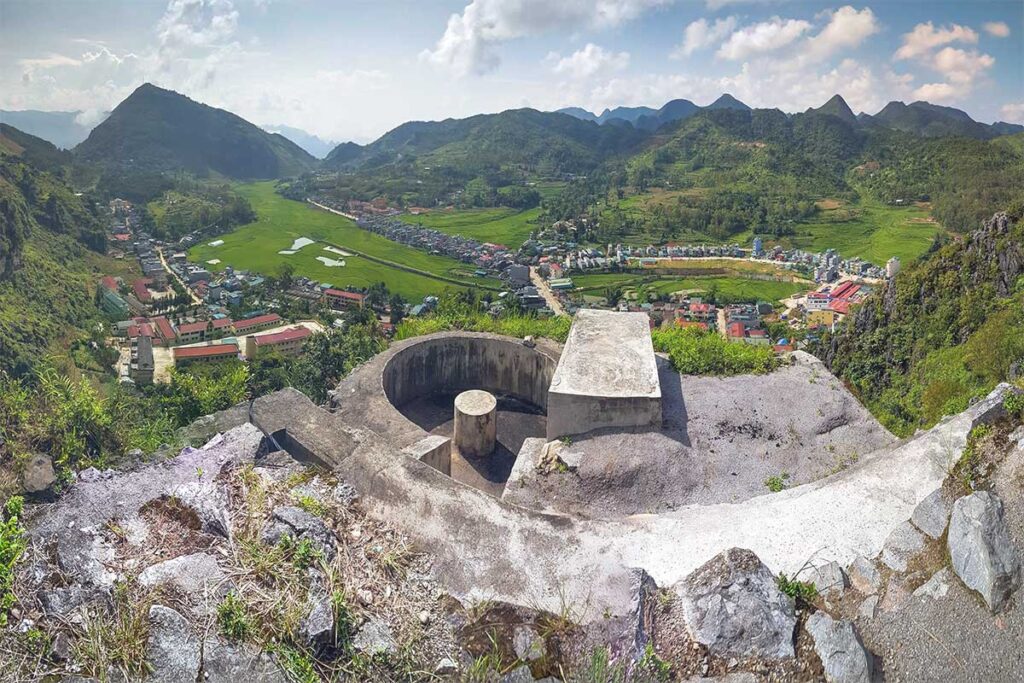
Perched on a hill behind Dong Van, the Don Cao Fort (French Fort) was built in 1927 during French colonial rule. The hike to the top involves climbing a series of steep steps, but the effort is rewarded with breathtaking 360-degree views over Dong Van town and the surrounding mountains.
While the fort itself is in ruins, it offers one of the best viewpoints in Dong Van. It is recommended to hike early in the morning or late in the afternoon to avoid the heat and to enjoy the best lighting for photos.
4. Explore Dong Van Karst Plateau Geopark
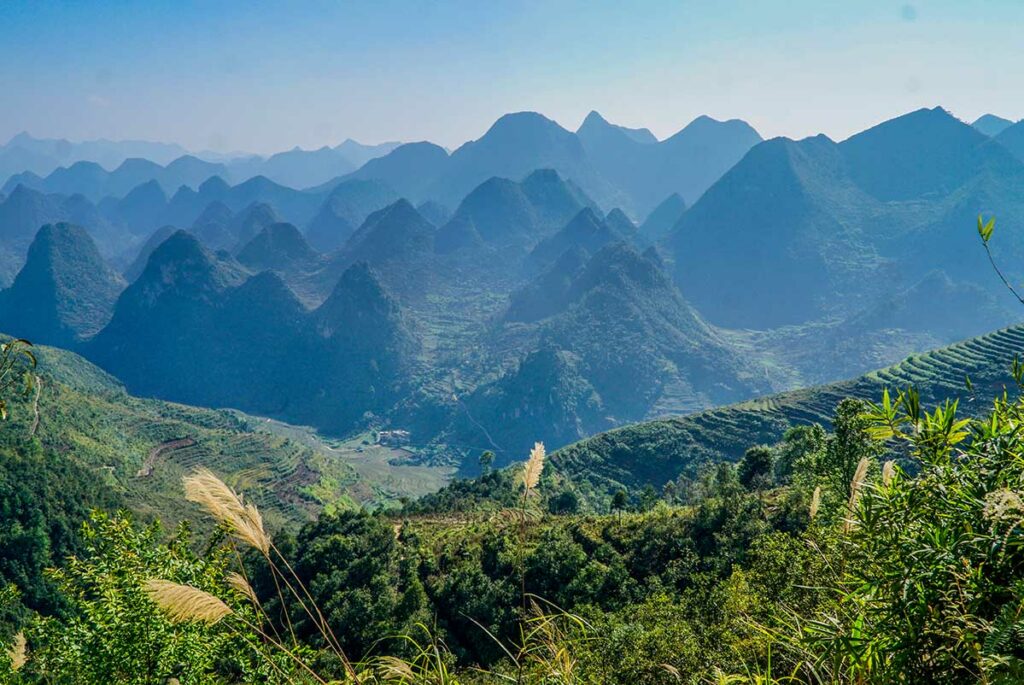
The Dong Van Karst Plateau Geopark is a surreal limestone landscape filled with jagged rock formations, deep valleys, and ancient fossils. Recognized as Vietnam’s first UNESCO Global Geopark in 2010, it covers 2,300 km² across four districts: Dong Van, Meo Vac, Quan Ba, and Yen Minh.
The geopark is not just about geological wonders—it is also home to numerous ethnic minority villages, scenic rice terraces, and spectacular mountain passes. As you drive through this region, you will pass through some of the most breathtaking landscapes in Vietnam, including the Tham Ma pass and Chín Khoanh pass, which are located on the route from Ha Giang City to Dong Van.
5. Drive over the Ma Pi Leng Pass
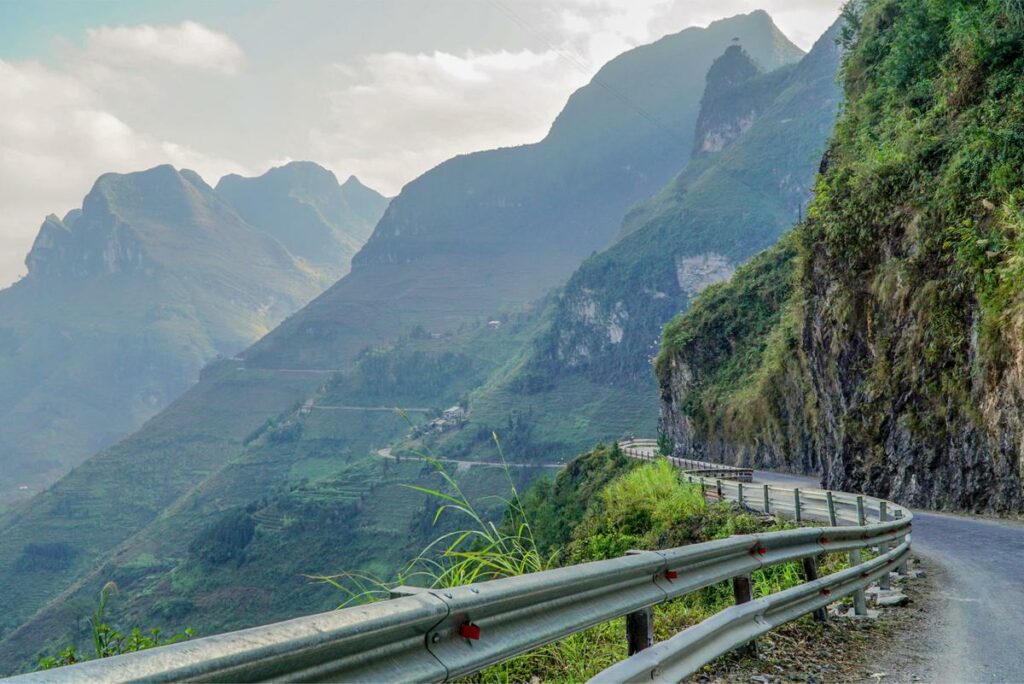
The 25-kilometer road from Dong Van to Meo Vac is one of Vietnam’s most spectacular routes, crossing the Ma Pi Leng Pass, which sits at an elevation of 1,500 meters. With sheer cliffs, dramatic drop-offs, and breathtaking views of the Nho Que River below, this pass is often regarded as the most impressive mountain pass in Vietnam.
There are several viewpoints along the road where you can stop to take photos. If you have time, consider walking the Ma Pi Leng Skywalk, a narrow scenic trail along the edge of the pass offering incredible panoramic views.
6. Take a boat trip on the Nho Que River

A boat trip on the Nho Que River is one of the most unique experiences in Ha Giang. The emerald-green river flows through a dramatic canyon, surrounded by towering limestone cliffs. The one-hour boat tour costs 300,000 VND per boat (shared between passengers) and offers a different perspective of the Ma Pi Leng Pass from the water.
For the best experience, visit early in the morning or late in the afternoon when the light is best and there are fewer tourists.
7. Visit Lung Cu, the northernmost point of Vietnam
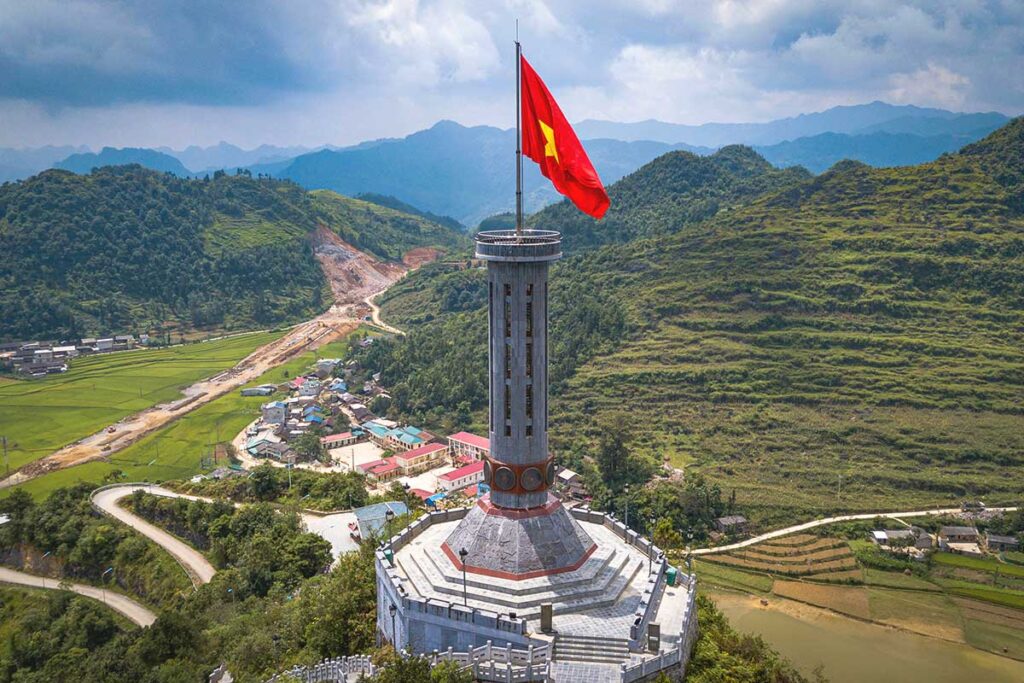
Located 30 km from Dong Van, Lung Cu is home to the Lung Cu Flag Tower, a massive national flag monument that marks Vietnam’s northernmost point. A climb to the top offers stunning views over the Vietnamese countryside and into China’s mountains.
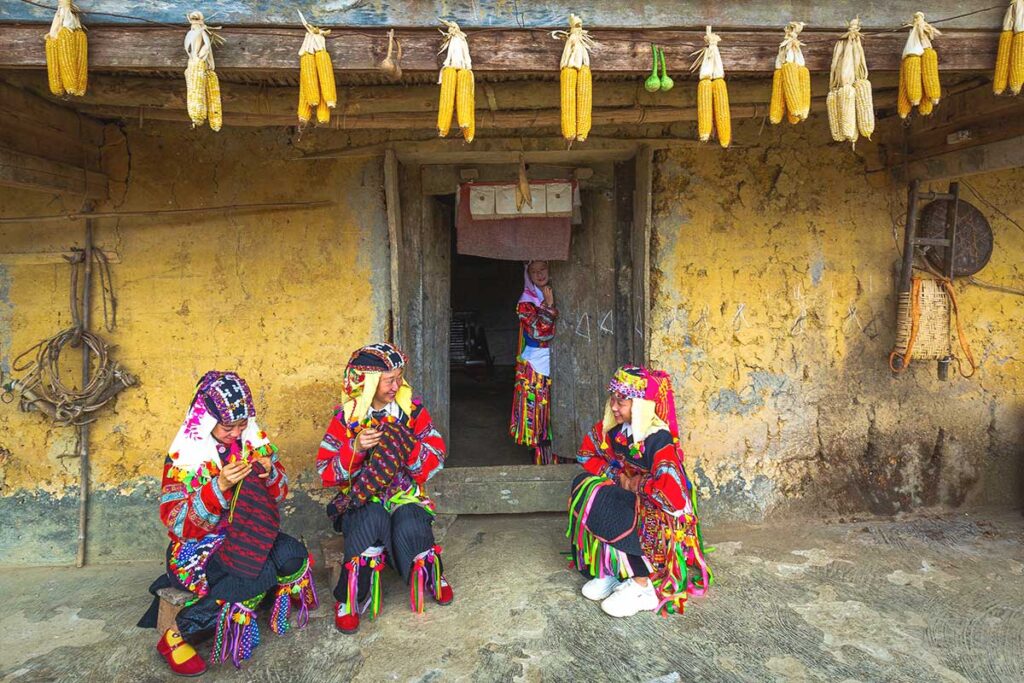
Although the flag tower is the main attraction, the road leading to Lung Cu is arguably just as impressive. Along the way, you’ll pass spectacular mountain scenery and ethnic villages, including Lo Lo Chai, where the Lo Lo ethnic minority live in traditional yellow clay houses.
8. Explore the Hmong King Palace in Sa Phin Valley
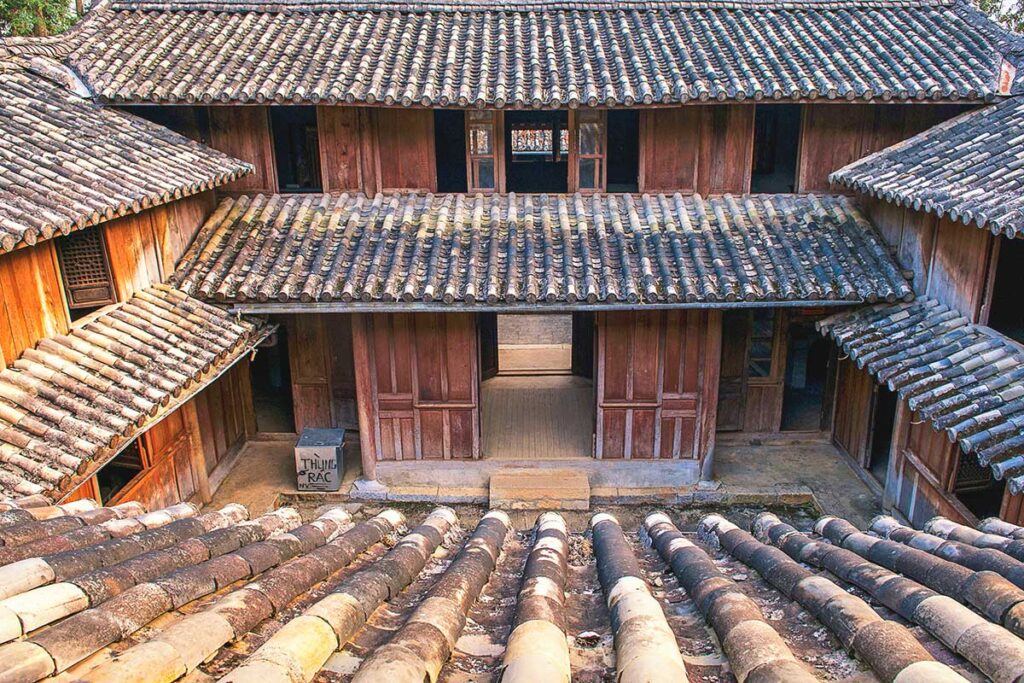
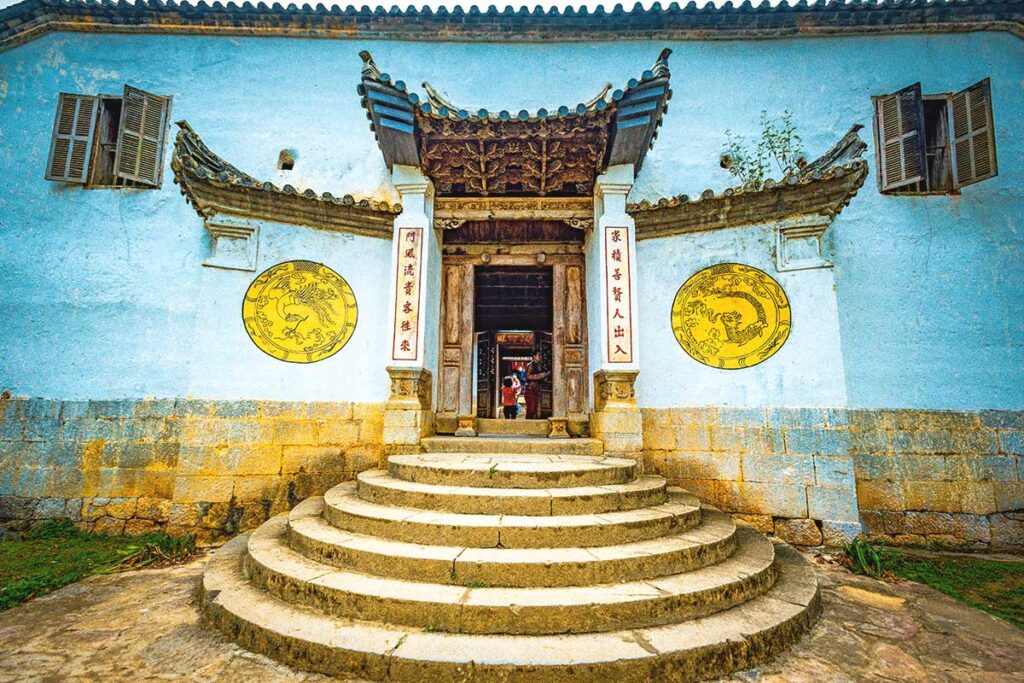
About 15 km from Dong Van, the Hmong King Palace was built in 1902 for Vuong Chinh Duc, the Hmong ruler of the region. The palace complex, made from wood and stone, is an interesting mix of Chinese, French, and Hmong architectural influences.
This historic site provides a glimpse into the power and wealth of the Hmong rulers during French colonial rule. While the palace itself is small, it’s a worthwhile stop to learn about the history of Ha Giang’s ethnic groups.
9. Go trekking in Dong Van’s mountains and ethnic villages
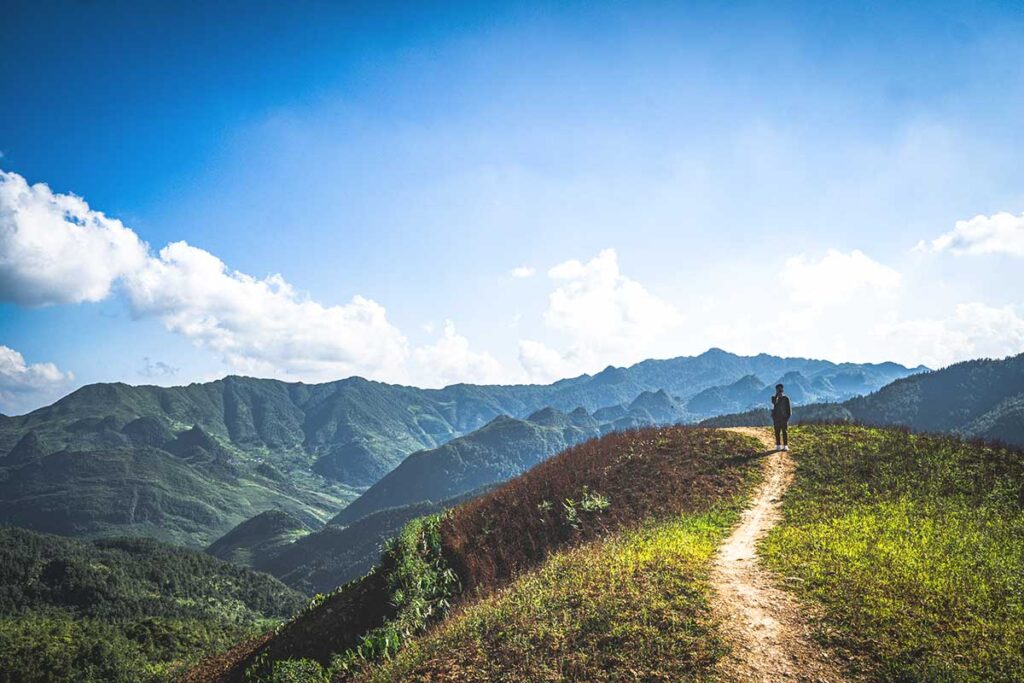
Dong Van district, including Lung Cu and the Dong Van Karst Plateau Geopark, is one of the best trekking areas in Ha Giang. The landscapes here include jagged limestone mountains, deep valleys, rice terraces, and remote ethnic villages.
You can choose between short village walks or multi-day treks with overnight stays in local homestays. The Lo Lo, Hmong, and Tay people have lived in this area for generations, and a trek offers a deeper insight into their culture, traditions, and way of life.
10. Try local food and specialties in Dong Van
Dong Van is a great place to try authentic northern Vietnamese cuisine. Some local specialties include:
- Thang Co – A traditional Hmong stew made with horse meat and organs, often served at local markets.
- Banh Cuon – A steamed rice roll filled with pork and mushrooms, usually eaten for breakfast.
- Five-color sticky rice – A visually striking dish made with naturally colored rice, often prepared during festivals.
The night market in Dong Van Old Quarter is also a great place to enjoy local food, tea, and a lively atmosphere in the evenings.
How to get to Dong Van
Dong Van is not a standalone destination but an important stop along the famous Ha Giang Loop, a multi-day journey through some of Vietnam’s most stunning landscapes. The loop starts and ends in Ha Giang City, passing through mountain passes, ethnic villages, and local markets before reaching Dong Van. To visit, your first step is to get to Ha Giang City.
Tip: Or book a tour to Dong Van with all transfers included
Reaching Dong Van is easiest as part of a Ha Giang Loop tour. All our tours include transfers from Hanoi and stops in Dong Van with guided activities, scenic drives, and flexible routes. Check all tour options here.
Getting to Ha Giang City from Hanoi
The distance from Hanoi to Ha Giang City is around 300 km, with a travel time of 6 to 7 hours. Since there is no airport or railway connection, the only way to get there is by road. Options include:
- Overnight sleeper buses – The most popular choice, departing in the evening and arriving early in Ha Giang.
- Daytime shuttle buses – Comfortable minivans that leave throughout the day, taking around 6–7 hours.
- Private car transfer – The most convenient but also the most expensive option.
Getting to Dong Van from Ha Giang City
From Ha Giang City, it is 140 km to Dong Van along the QL4C highway. This road, also called the Happiness Road, winds through incredible mountain scenery, including Tham Ma Pass, Sung La Valley, and the Hmong King Palace before reaching Dong Van. While local buses are available, they are slow, unreliable, and not recommended. The best ways to travel are:
- Motorbike – The most adventurous and flexible way to explore. You can rent a motorbike and drive yourself, but be aware that the roads are steep and winding. Without a driver’s license, you are often not fully insured in case of an accident.
- Easy Rider (motorbike with driver) – A great option if you want the experience of riding a motorbike without the risk of driving yourself. An experienced local guide will drive while you enjoy the scenery.
- Car or Jeep with driver – The safest and most comfortable option, ideal for those who prefer not to ride a motorbike. Jeep tours offer an open-roof experience for better views but are more expensive.
Getting to Dong Van from Meo Vac
If you are coming from Meo Vac, Dong Van is just 25 km away along the QL4C highway. This route crosses Ma Pi Leng Pass, the most spectacular mountain pass in Vietnam, making the short journey an unforgettable experience.
Accommodations in Dong Van
There are plenty of hotels and homestays in and around the town. When you choose to stay inside the town you are close the the Old Quarter and have more options to eat. Though, it is worth considering to stay out of town. There are enough homestays in small villages where you can learn a lot more about the minority culture then staying inside the town and in addition it is a very great experience. For a the most local experience, try finding homestays around Lung Cu.
Some recommended accommodations:
- Green Karst Hostel & Bar – Clean and comfortable, close to restaurants and bars. Everything you need after a long day of driving.
- Hoang Ngoc Hotel – One of the better hotels in Dong Van. Room is clean and neat. Located in the center of the city, close to restaurants.
- Triệu Nghị homestay – A favorite for many backpackers who follow the Ha Giang loop. Friendly family and good dinner.
- Lam Tung Hotel – Very decent hotel right in the center of the city, with nice rooms
- Binh Minh Hostel – Located in the city. Nice big room with clean bathroom. Perfect for an overnight stay during the run. Plenty of food options nearby.
Best time to visit
As this area is not the place to visit for rice fields, the area around Dong Van is equally beautiful all year round. Having that said, during the summer months June until September there is rainy seasons, with July and August being the peak of amount of rain fall. It does not have to be a reason not to go, as it normally does not rain all day, but there are more changes on land slides. In the winter months of December and January the temperatures can drop to 10 degrees, making it less pleasant to be on a motorbike. Especially at night it can get cold, so it might be wise to pick a hotel instead of staying in a not very isolated homestay.
Travel tips for visiting Dong Van
Stock up
Dong Van is one of the bigger towns along the Ha Giang Loop, making it a good place to restock supplies before continuing your journey. You’ll find small shops selling snacks and drinks, and gas stations where you can fill up your motorbike—especially important if you’re heading over Ma Pi Leng Pass, where fuel stops are scarce. There are also ATMs in town, making it a good place to withdraw cash, as most restaurants, homestays, and shops in the region do not accept card payments.
Eating and drinking
Dong Van offers more dining options than most other towns on the loop. While local Vietnamese food dominates, you can also find a few places serving Western dishes, perfect if you’re craving something different. That said, it’s still a small town, so don’t expect too many choices. Street food stalls and local eateries offer cheap and tasty meals, and there are coffee shops where you can take a break and enjoy the atmosphere.
Spending the evening
If you’re staying overnight in Dong Van town, head to the old quarter in the evening. This historic part of town is charming at night, with warm lighting, small restaurants, and a relaxed atmosphere. While there’s no real nightlife, there are a few small bars where you can grab a drink and meet other travelers. On weekends, the area can be busier, and there are sometimes small cultural events or live music performances in the central square.
